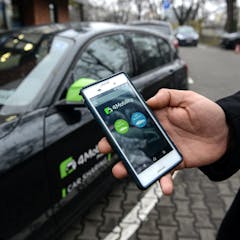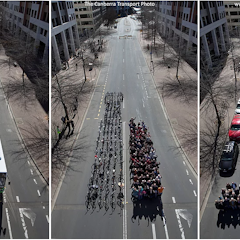
Articles on Cities & Policy
Displaying 201 - 220 of 836 articles

The health concerns that dominate public submissions to the parliamentary inquiry into WestConnex are a reminder that papering over such issues comes back to haunt governments.

Moves to connect people with nature for both the conservation and health benefits point to the need for people to experience nature as they find it in the city, rather than only out in natural areas.

The thing about new housing is you need land to build it on. Developers are able to control its release at a rate that doesn’t put downward pressure on prices.

How smart are our cities now? In Queensland, a study of all 78 local government areas reveals major gaps between the ten leading the way in becoming smart cities and the rest of the state.

Investment is pouring into urban technology, much of it into innovative ventures that aim to transform how we get around our cities.

To cut emissions within the 12 years or so we have left to avoid disastrous global warming, we will need to change our old transport habits, using a combination of strategies to achieve this.

The cities we build in turn shape our society. So when so many of us feel lonely, we should aim to apply what we know about the social impacts of design to help people connect with each other.

Asian Australians experience high levels of racism. Almost six in ten Asia-born Australians report having had experiences of discrimination when trying to rent or buy housing.

Whichever party wins, Victoria’s new government will have promised the biggest transport infrastructure project in Australian history. So what are the promises and are they backed by proper assessment?

The differences between owners and the growing number of renters, and between rural and urban areas, point to explanations other than affordability for the one-in-two Australians who are underinsured.

Apps that seamlessly combine all our travel options could be the most significant transport innovation since the automobile, but early trials show government policy support is vital to make MaaS work.

The private car is the default transport option for many families. This reduces physical activity and increases greenhouse gas emissions, with unhealthy results for their children and the environment.

In the year since the resounding Yes vote in the same-sex marriage survey, the flag has clearly escaped the pole or the street bunting of pride festival times to become ever present in our cities.

A tenfold increase in building is needed to overcome the current social housing shortfall and cover projected growth in need. But it can be done, and direct public investment is the cheapest way.

Life on the street is no place to recover from a stay in hospital, but that’s what happens to many people who are homeless. But there’s a proven model to provide care that also cuts healthcare costs.

The city where the Kyoto Protocol was signed resolved some years ago to move away from cars and towards low-emission alternatives for getting around. And it’s making real progress towards that goal.

Blind belief that new technology and disruptive innovation will fix congestion in our cities overlooks the need for strong leadership that supports progressive policy innovation.

Dallas Rogers speaks with Chris Ho and Edgar Liu about what's going on in apartment buildings as we move up, rather than out, and how we can look after ourselves and each other in culturally diverse, high-density living.

Short-term letting via digital platforms benefits some in the market at the expense of others. Closer regulation might be needed in Melbourne and Sydney, where a permissive approach prevails.

Australian cities are world-leading – in the worst sense – for resource use and greenhouse emissions. China-born residents have embraced these consumption patterns, which is bad news for the planet.
